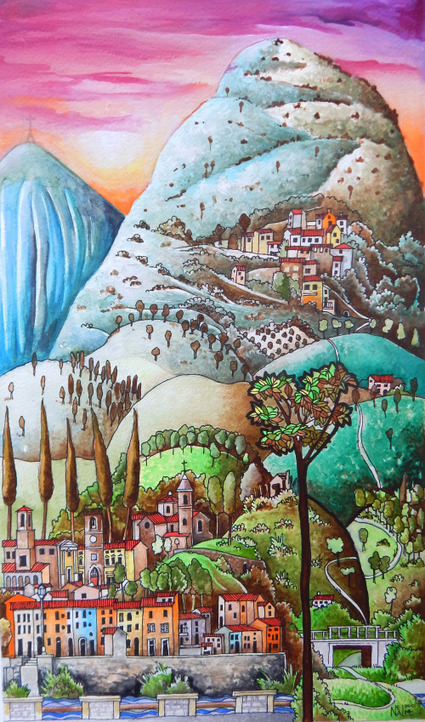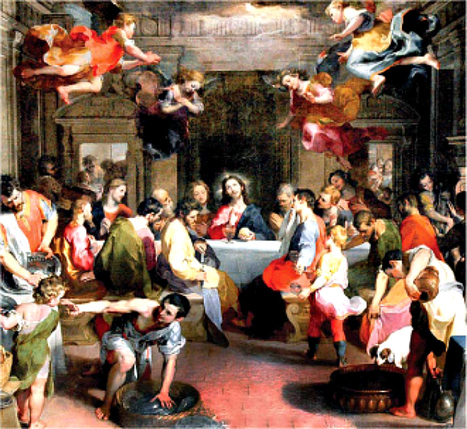La Fornarina, by Raphael is a Renaissance portrait that’s not only sensual… it’s hiding some serious surprises.
Here’s what we know about La Fornarina, which hangs in the Palazzo Barberini in Rome. (An excellent copy hangs in Rome’s Galleria Borghese, as well).
We know the portrait was completed around 1520, the year of Raphael’s untimely death. We know the work is Raphael’s. And we know, of course, what it depicts: a lovely young woman, posing mostly nude, staring with a sweet, coy look at the viewer (and at the artist).
The big mystery: Who is she?
Of course, we can’t be sure. But some clues have led art historians to think she was none other than Raphael’s own mistress. And—here’s where Dan Brown would really go crazy—secret bride.
Raphael was a bit of a ladies’ man. But one woman, it seems, really stole his heart. Nicknamed “la Fornarina,” Margherita Luti, the daughter of a local baker, bewitched Raphael so much, the artist couldn’t concentrate on his commissioned work for Agostino Chigi—so much so that Chigi finally allowed her to move into the palace with him!
That the subject posed nude for Raphael is just one reason to think she might have been more than just a professional commission. Another hint: the fact that Raphael signed his name on the subject’s left armband, the arm connected to one’s heart. Or that her right hand is resting, gently, over her heart.
If this really is la Fornarina, then an even greater mystery was uncovered a few years ago—literally. When the painting was cleaned and restored, something surprising turned up on the girl’s left hand: a wedding ring.
Why did that give believers of the portrait’s identity as la Fornarina cause to gasp? Because while Raphael was going around with the baker’s daughter, he was engaged… to a cardinal’s niece. He never married the woman. But this, some say, might be the reason why: Turns out, he was already secretly married to la Fornarina!
That he would have kept the marriage a secret would have made sense, given his engagement and his high social status—and since he suddenly died at the age of 37, it’s equally plausible that a student of his would have rushed to cover up the ring, hoping to keep the marriage a secret for posterity. (It is, in fact, generally thought that the painting was found in Raphael’s studio when he died and that the “finishing touches,” including, perhaps, a cover-up, were added by his student, Giulio Romano, who then sold the painting).
Of course, lots of art historians disagree. One running theory: The woman isn’t a lover of Raphael, but Francesca Ardeasca, the wife of Agostini Chigi. That would explain the ring. But there’s no other portrait of Francesca in existence, so it’s impossible to prove.
Via
Mariano Pallottini



 Your new post is loading...
Your new post is loading...










